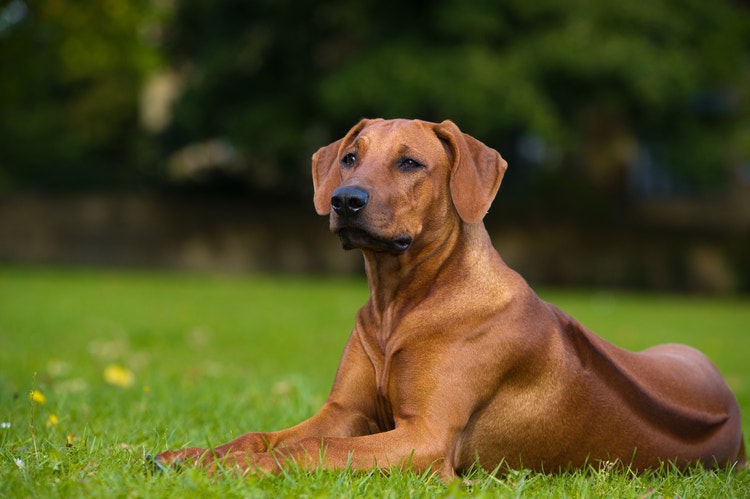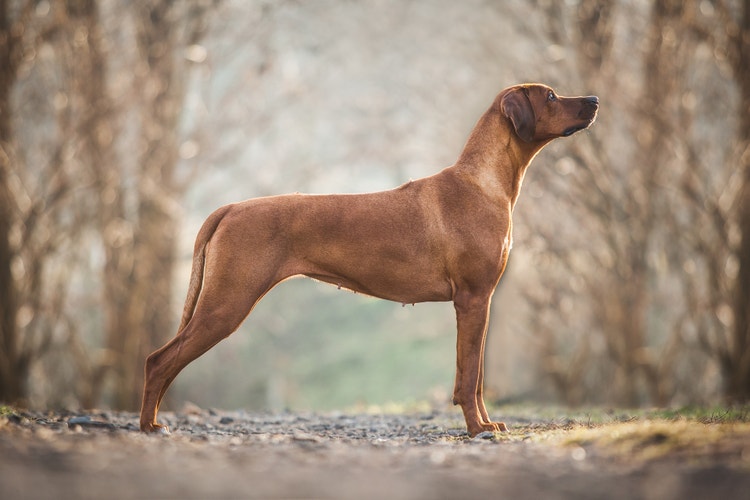
Rhodesian Ridgeback


Where Are Rhodesian Ridgebacks From?
Ancestors of the Rhodesian Ridgeback breed can be traced to the 16th century, belonging to the Hottentot people of southern Africa. The following century, they were crossed with large dogs of European settlers to create a powerful breed of scent-hound that could be used to hunt wild game in Africa. In the late 19th century, the breed was taken to Rhodesia, where they propagated and became known for assisting big-game hunting. Official breed standards for the Rhodesian Ridgeback were created in 1922. They were officially recognized as part of the Hounds category by the American Kennel Club in 1955.
Caring for a Rhodesian Ridgeback
What Kind of Diet Does a Rhodesian Ridgeback Need?
What Kind of Diet Does a Rhodesian Ridgeback Need?
The Rhodesian Ridgeback thrives on a high-quality, large-breed diet. They love to eat and are prone to obesity, so careful portion control is imperative.
How Much Grooming Does a Rhodesian Ridgeback Need?
How Much Grooming Does a Rhodesian Ridgeback Need?
The Rhodesian Ridgeback has a sleek coat that does not require much grooming. Occasional brushing can help remove dead hair and keep the coat shiny. Regular nail trimming is advised and should begin when the dogs are puppies.
Are Rhodesian Ridgeback Dogs Healthy?
Are Rhodesian Ridgeback Dogs Healthy?
Rhodesian Ridgebacks are relatively healthy dogs. On average, they live about 8 – 12 years. An inherited, autosomal recessive trait specific to Ridgeback dogs is the dermoid sinus, a cyst-like remnant of the embryonic neural tube that persists under the skin after birth and is sometimes connected to the spine. Clinical signs typically present themselves in puppyhood and include swellings, draining tracts along the skin of the back, meningitis, or myelitis. As this is a genetic trait, responsible breeders should be effective at preventing this trait in their litters.
The Rhodesian Ridgeback is predisposed to: gastric dilatation volvulus, hip dysplasia, hypothyroidism, degenerative myelopathy, osteochondrosis, congenital deafness, entropion, and allergies.
How Much Training Does a Rhodesian Ridgeback Need?
How Much Training Does a Rhodesian Ridgeback Need?
Rhodesian Ridgebacks are powerful and can be headstrong. They are naturally protective and suspicious of strange animals and humans, so early training to prevent aggression should be started when young. Their dominant nature is counteracted best with a firm handler; obedience training and thorough socialization should begin in puppyhood.
How Much Exercise Does a Rhodesian Ridgeback Dog Need?
How Much Exercise Does a Rhodesian Ridgeback Dog Need?
Rhodesian Ridgebacks are athletic and have a strong natural inclination to chase prey. As such, they should always be kept on a leash outside if not in a fenced-in area. They are a bright breed and thrive under adequate mental stimulation and physical exercise. Regular play outside with the ability to run will prevent monotony and boredom, which could manifest as destructive behavior in the home. Rhodesian Ridgebacks are good family dogs and great with children, although small children should be supervised so that they don’t get injured amid the Ridgeback’s rambunctious style of play.
What Are the Physical Characteristics of a Rhodesian Ridgeback?
Rhodesian Ridgeback Facts
Other Breeds to Explore
References
- American Kennel Club. The Complete Dog Book. Random House Digital, Inc., 2006.
- Morris, Desmond. Dogs: The Ultimate Dictionary of Over 1,000 Dog Breeds. Trafalgar Square, 2002


